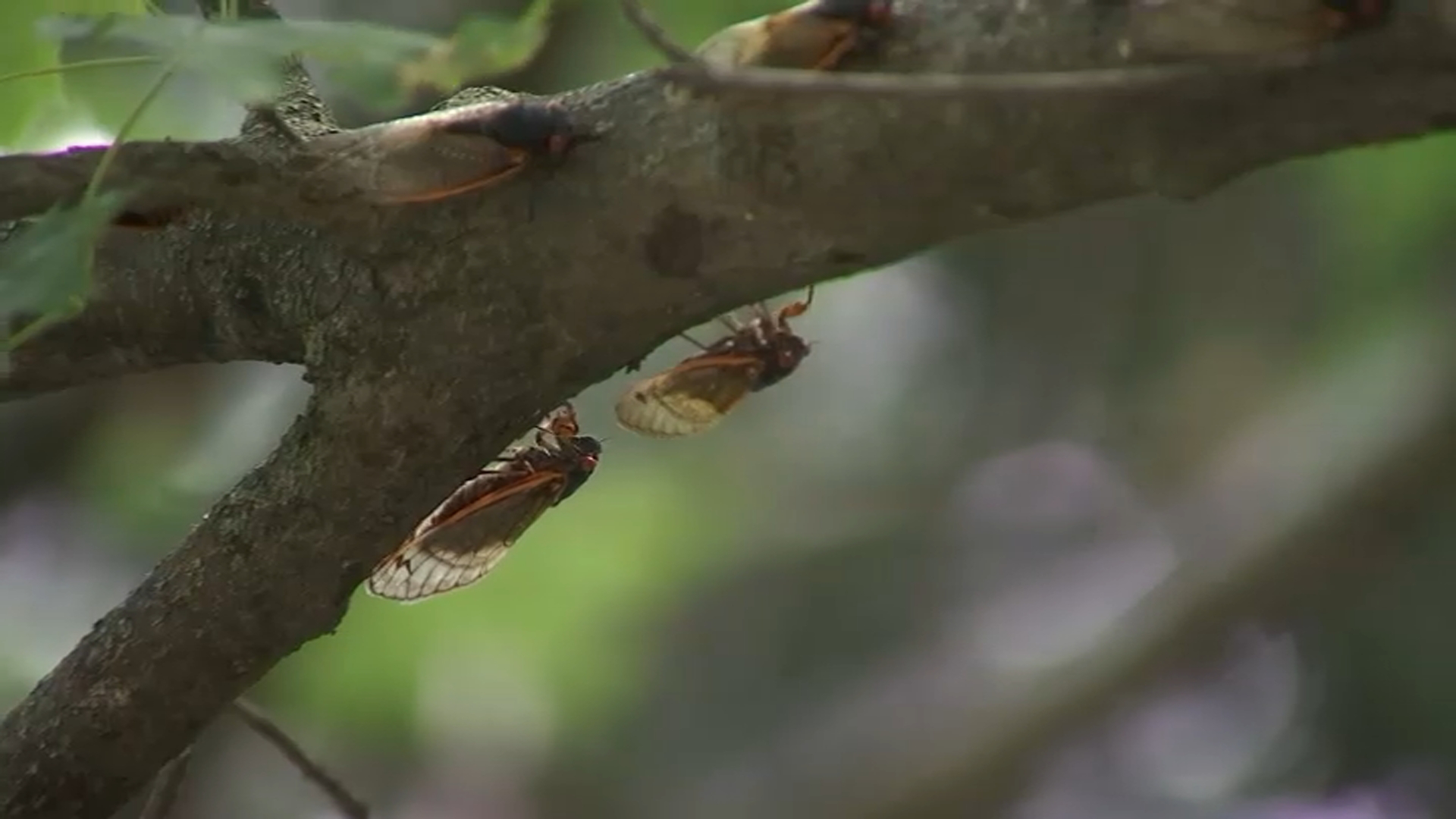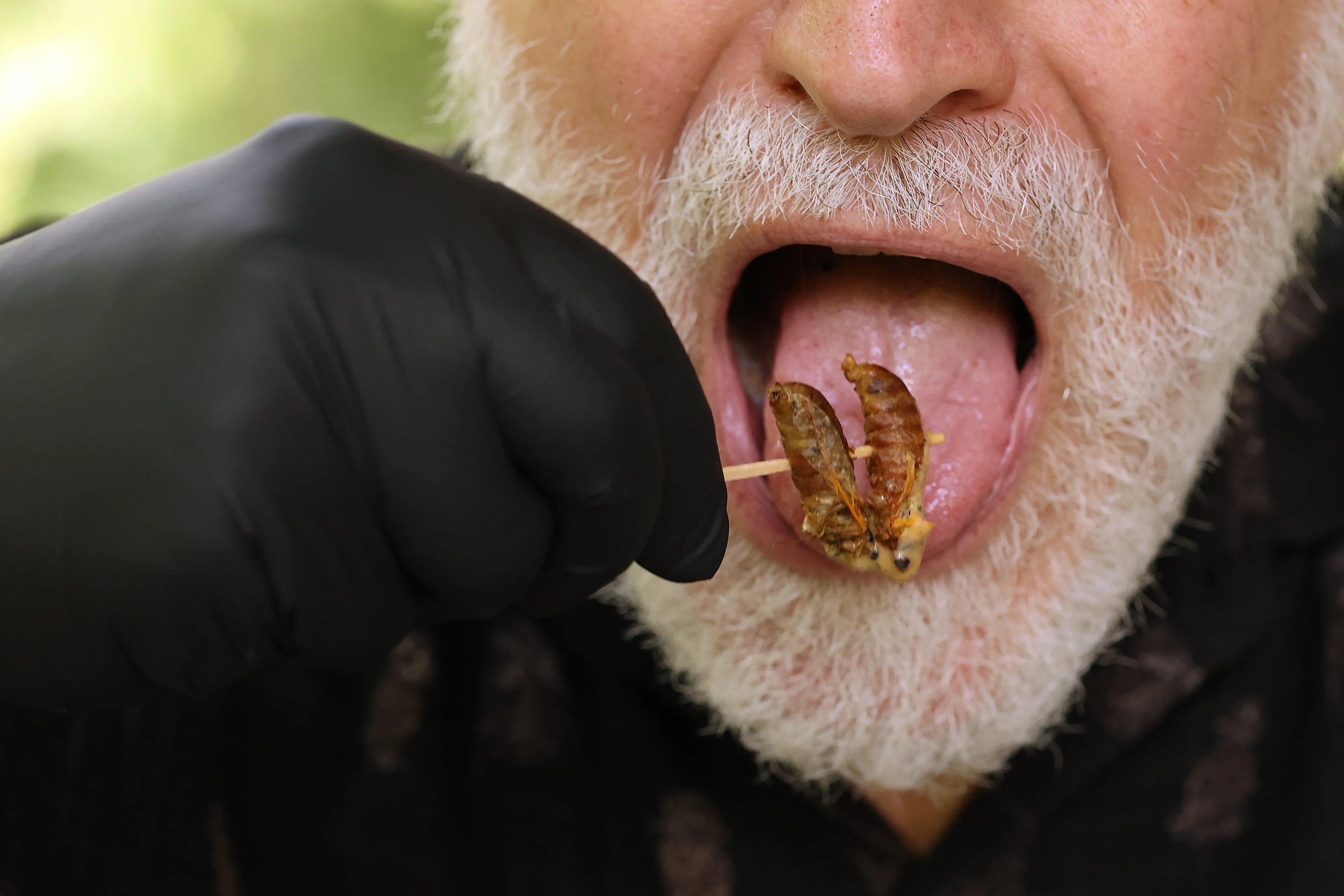While 2024 has already been dubbed the "Year of the Cicada," the title is especially apt for Illinois as a dual explosion of cicadas will hit parts of the state, with an overlap of two major broods and an emergence that hasn't been seen in centuries.
The rare event, which could bring billions of cicadas to the surface, only occurs once every 221 years.
So what can you expect and when?
Here's what we know so far:
What's happening with the 2024 cicada broods and why is it different?
The 2024 cicada explosion will see two different broods of cicadas — one that lives and breeds on a 13-year cycle and another on a 17-year cycle — emerging from underground at the same time, bringing billions to the surface.
While that itself isn't particularly unusual, the two broods that will emerge this year haven't been seen at the same time since 1803.
Those include Brood XIII and Brood XIX.
"Co-emerging broods aren’t that rare given that almost every year a different brood will emerge across the US," Catherine Dana, an affiliate of the Illinois Natural History Survey at the University of Illinois Urbana-Champaign, told the university in a recent interview. "What is rare is that this only happens with Brood XIII and Brood XIX every 221 years. I have been looking forward to this for many years."
Feeling out of the loop? We'll catch you up on the Chicago news you need to know. Sign up for the weekly Chicago Catch-Up newsletter.
And Illinois is in a unique position to see it all.
"What’s more, this year’s cicada groups, known as Brood XIII and Brood XIX, happened to make their homes adjacent to one another, with a narrow overlap in central Illinois," NBC News reported.
When will the cicadas emerge and for how long?
The two 2024 broods will emerge earlier than the well-known "dog day" cicadas, which are often seen in early July, according to Dana.
Cicadas typically emerge as the ground begins to warm in the spring and early summer.
That means an emergence between mid-May and early June, though some could start as early as late April.
For the Chicago area, Brood XIII will be most seen in parts of northern Illinois and Indiana, and possibly even in Wisconsin and Ohio, in late May 2024, Dr. Gene Kritsky, dean of Behavioral and Natural Sciences at Mount St. Joseph University in Cincinnati said in a 2023 press release.
According to an article from the University of Illinois Urbana-Champagne Extension, the Northern Illinois Brood's emergence typically occurs in May and June, and lasts approximately four weeks.
"Adult cicadas will be active until mid- to late June, but you will see evidence long after they are gone, including their wings, molts, and decomposing bodies," Dana said.
What to know about Brood XIII
The Northern Illinois Brood itself is huge, with a reputation for the "largest emergence of cicadas anywhere," according to the university.
In 1956, entomologists reported as many as 311 "emergence holes" per square yard in a forested floodplain near Chicago, which experts say translated to 1.5 million cicadas per acre, according to the University of Illinois.
"When the cicadas start dying and dropping from the trees later in the spring, there are large numbers on the ground, and the odor from their rotting bodies is noticeable," U of I reports. "In 1990, there were reports from people in Chicago having to use snow shovels to clear their sidewalks of the dead cicadas."
What about Brood XIX?
Meanwhile, Brood XIX cicadas have a more widespread population, covering parts of Missouri, Illinois, Louisiana, North Carolina, Virginia and Maryland.
What about other broods?
In 2028, the Mississippi Valley Brood known as "Brood XXIII" are expected to emerge in Southwestern and Southeastern Illinois, though some "stragglers" from that bunch could also appear in 2024, the University of Illinois reported.
What to know about cicadas
Cicadas are not harmful to people or pets, or even to household gardens or crops, according to the Environmental Protection Agency.
Cicadas don’t bite or sting and pesticides will not work on periodical cicadas, experts say.
Noise
Although mostly harmless, the noise of the insects can be disruptive, the U of I said. Additionally, eggs from adult cicadas on twigs and shoots could cause "substantial damage" in newly planted orchards.
"Most of the state of Illinois will experience periodical cicada emergence in 2024," the University of Illinois said. "Besides the noise, which may be substantial, this large group of insects is harmless and can be appreciated and enjoyed by nature lovers of all ages."
Male cicadas can reach decibels similar to a lawn mower or passing jet, and their numbers will be large, but their life cycle is short, at just four to six weeks. Then, the adults die but leave behind a new generation. Those nymphs will live underground until the year 2038.
In a year of full emergence, when the bugs surface, they quickly begin mating, which is often met with the noise most associate with cicadas.
“Once those cicadas are out of the ground, it’s all about romance,” Mike Raupp, Professor Emeritus of Entomology at the University of Maryland, previously said.
Benefits of cicadas
As for the benefits of cicadas, the EPA notes that they:
- are a valuable food source for birds and other predators.
- can aerate lawns and improve water filtration into the ground.
- add nutrients to the soil as they decompose.
Life cycle
"During the final molt of their exoskeleton, immature cicadas (i.e., nymphs) construct a tunnel through which they emerge from the ground. They will then molt into adults, leaving the nymphal exoskeleton behind, often attached to a tree," the EPA states. "The adults climb into trees and shrubs and mate. Females deposit their eggs onto small twigs (pencil diameter to ½ inch). The nymphs will hatch from these eggs after 6 weeks and fall to the ground. They will then burrow into the soil and begin feeding on roots of trees and shrubs to restart the cicada lifecycle."




